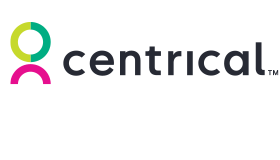Effective capacity planning is possible in any contact centre – Centrical discusses the recipe for success.
One of the many elements that make up contact centre operations is contact centre capacity planning. Also known as strategic workforce planning or resource planning, this process helps determine and allocate the resources needed for a contact centre to run efficiently.
Effective capacity planning in contact centres helps give agents the right amount of work without burnout, assists with meeting service level agreements (SLAs), and, at the end of the day, results in a great customer experience.
Poor planning can lead to burnout, confusion, frustration, angry clients, and a subpar customer experience.
What Is Capacity Planning in Contact Centres?
Capacity planning in contact centres is the process of determining the resources required to handle customer interactions effectively.
This involves forecasting call volumes, staffing needs, and the necessary infrastructure to ensure a smooth operation.
By accurately predicting future demands, contact centres can allocate the right number of agents, schedule shifts appropriately, and maintain a high level of customer service.
Why Is Capacity Planning Important for Contact Centres?
Capacity planning is crucial for contact centres for several reasons:
- Optimizes Resource Utilization: Proper capacity planning ensures that resources are used efficiently, reducing both overstaffing and understaffing scenarios. This optimization helps in maintaining operational costs while delivering quality service.
- Enhances Customer Satisfaction: When a contact centre is well staffed, customer wait times decrease, and issues are resolved more quickly, leading to higher customer satisfaction.
- Improves Employee Morale: Agents working in a well-planned contact centre experience less stress and burnout. They are neither overwhelmed by excesses nor bored due to inactivity, leading to better job satisfaction.
- Enables Proactive Management: With effective capacity planning, contact centres can anticipate busy periods and prepare accordingly, avoiding last-minute scrambles and ensuring a steady workflow.
6 Benefits of Capacity Planning for Contact Centres
- Cost Efficiency: By aligning staffing levels with call volumes, contact centres can minimize unnecessary labour costs while ensuring sufficient coverage during peak times.
- Better Forecast Accuracy: Advanced capacity planning tools and techniques enhance the accuracy of demand forecasts, enabling more precise scheduling and resource allocation.
- Improved Service Levels: Capacity planning helps maintain consistent service levels, ensuring that customer interactions are handled promptly and efficiently.
- Scalability: As contact centres grow, capacity planning becomes even more critical. It allows for scalable solutions that can adapt to increasing volumes without compromising service quality.
- Risk Mitigation: By anticipating demand fluctuations and planning accordingly, contact centres can mitigate risks associated with sudden spikes in call volumes, such as long wait times and frustrated customers.
- Data-Driven Decisions: Capacity planning relies on data analysis and forecasting, empowering managers to make informed decisions based on real-time insights.
How to Implement Capacity Planning in a Contact Centre
- Analyse Historical Data: Start by collecting and analysing historical call data to identify patterns and trends. This analysis forms the basis for accurate demand forecasting.
- Use Advanced Forecasting Tools: Invest in advanced forecasting tools that utilize machine learning and AI to predict call volumes more accurately. These tools can process large datasets and provide actionable insights.
- Develop a Staffing Plan: Based on the forecast, create a staffing plan that aligns with expected call volumes. Consider factors such as agent skills, shift preferences, and peak times.
- Monitor and Adjust: Continuously monitor actual call volumes and compare them with forecasts. Make necessary adjustments to the staffing plan to address any discrepancies.
- Train and Communicate: Ensure that all staff are trained on the importance of capacity planning and understand their roles in executing the plan. Regular communication helps in maintaining alignment and addressing any issues promptly.
- Review and Refine: Periodically review the effectiveness of your capacity planning process. Gather feedback, analyse performance metrics, and make improvements to enhance future planning efforts.
Using Gamification for Boosting Team Performance
Effective contact centre capacity planning starts with a smooth employee and manager experience.
When employees are well trained, knowledgeable, motivated, engaged, and well coached, they can deliver faster, high-quality interactions, thus reducing average handle time, helping to meet SLAs, and providing a best-in-class customer experience.
Here are several features that can assist with contact centre capacity planning:
- Real-time performance insights: These tools allow employees and managers to track progress against goals, helping to boost engagement and performance. Managers can identify areas needing improvement and enhance their coaching strategies accordingly.
- Targeted microlearning: Provides bite-sized training modules triggered by skill and knowledge gaps, ensuring employees receive the right learning materials at the right time.
- Advanced gamification: Uses intrinsic and extrinsic motivators to drive behavioural changes that improve employee engagement and performance. By aligning gamification with goals and KPIs, it promotes long-term, sustainable business outcomes.
- Augmented coaching: Reduces administrative tasks for managers, allowing them to focus more on face-to-face, human-centred coaching sessions.
- AI-powered manager insights: Helps managers prioritize and automate coaching actions, such as sending learning recommendations, next steps, and recognition for milestones or achievements.
- Enhancing Quality Management (QM) processes: Optimises these processes to reveal deeper insights into employee performance and identify factors that may affect operations and customer experience.
Summary and Key Takeaways
Contact centre capacity planning ensures optimal resource utilization, enhances customer satisfaction, and improves overall operational efficiency.
By implementing a robust capacity planning strategy, contact centres can achieve a balance between cost efficiency and service quality, ultimately driving better business outcomes.
Below are a few key takeaways:
- Capacity planning in a contact centre is important, as it leads to improved employee morale, proactive management, optimized resource utilization, and higher customer satisfaction.
- Other benefits include improved forecast accuracy, cost efficiency, service levels, scalability, and risk mitigation. Real-time insights also better inform leaders’ decisions.
- For successful contact centre capacity planning, leaders should refer to historical data, leverage advanced forecasting tools, ensure that call volumes are aligned with the forecast, review processes, and their effectiveness, and refine where needed.
- One of the best tools for effective contact centre capacity planning is a well-trained workforce. By using a gamified approach to learning and performance and leveraging AI, call centres can motivate employees to learn while boosting knowledge retention and performance
This blog post has been re-published by kind permission of Centrical – View the Original Article
For more information about Centrical - visit the Centrical Website
Call Centre Helper is not responsible for the content of these guest blog posts. The opinions expressed in this article are those of the author, and do not necessarily reflect those of Call Centre Helper.
Author: Centrical
Published On: 25th Jun 2024 - Last modified: 22nd Oct 2024
Read more about - Guest Blogs, Centrical






 Centrical provides a real-time performance management, microlearning, gamification, coaching, and voice of the employee platform for frontline teams. The solution inspires and personally guides employee success and growth by making every moment actionable.
Centrical provides a real-time performance management, microlearning, gamification, coaching, and voice of the employee platform for frontline teams. The solution inspires and personally guides employee success and growth by making every moment actionable. 








